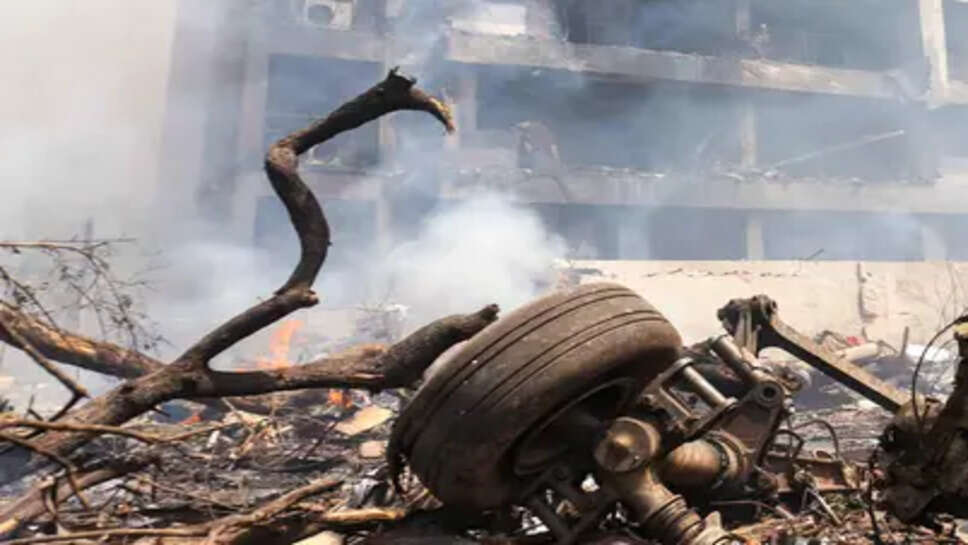AAIB Begins Decoding Black Boxes from Air India Dreamliner Crash

In the aftermath of the recent Air India Boeing 787 crash, aviation authorities in India have launched a comprehensive investigation to determine the cause of the accident. The Aircraft Accident Investigation Bureau (AAIB), the primary agency responsible for civil aviation crash investigations in the country, has begun extracting and analyzing critical data from the aircraft’s black boxes at its newly inaugurated advanced laboratory in New Delhi.
The Incident
The crash occurred during a scheduled international flight from Dubai to Delhi, with over 200 passengers and crew members on board. According to initial reports, the aircraft lost control during the final approach to Indira Gandhi International Airport (IGIA), leading to a hard landing and skidding off the runway. Emergency evacuation procedures were promptly initiated, and all passengers were safely rescued, although several sustained minor injuries.
This incident, involving one of the flag carrier’s Boeing 787 Dreamliners, has raised serious concerns about aircraft safety protocols, pilot response systems, and mechanical integrity, especially given the aircraft’s relatively young age and advanced technology.
Immediate Response
Soon after the crash, authorities cordoned off the area, and a team from the AAIB arrived at the scene. Preliminary assessments involved securing the wreckage, retrieving the Flight Data Recorder (FDR) and Cockpit Voice Recorder (CVR), collectively known as the “black boxes,” and collecting testimonies from the flight crew, ground staff, and passengers.
The Ministry of Civil Aviation termed the crash a “serious aviation incident” and directed the AAIB to conduct a time-bound investigation. Meanwhile, Air India has grounded the remaining Boeing 787s in its fleet for thorough checks, particularly focusing on mechanical systems like landing gear, autopilot controls, and fuel systems.
Black Box Analysis at AAIB’s New Delhi Lab
In a significant development, the AAIB has opted to analyze the black box data at its newly equipped state-of-the-art laboratory in New Delhi, which was inaugurated earlier this year. This facility marks a milestone for Indian aviation as it reduces reliance on foreign labs for decoding critical crash-related data. Previously, in major crashes, black boxes were sent abroad—often to the US or France—for detailed examination.
The Delhi lab houses a specialized Data Recovery and Analysis Centre, equipped with software and hardware tools capable of decoding encrypted flight parameters, crew conversations, and system diagnostics. Engineers and aviation experts are now working round the clock to decode and interpret the thousands of data points recorded during the final minutes of the flight.
What the Black Boxes Could Reveal
The Flight Data Recorder is expected to provide crucial insights into the aircraft’s altitude, speed, engine thrust, control inputs, autopilot engagement, and other parameters, while the Cockpit Voice Recorder will shed light on the crew’s last conversations, cockpit environment, and any potential warning alerts from the onboard systems.
Investigators are particularly interested in the following areas:
-
Flight Path Deviations: Any irregularities in the aircraft’s descent trajectory, sudden altitude drops, or sharp turns.
-
Pilot Inputs: Whether manual override of autopilot systems occurred, and if so, why.
-
System Warnings: Any audio alerts or system notifications that indicated mechanical issues.
-
Weather and Visibility: Real-time data about wind shear, turbulence, or low visibility, which could have contributed to the crash.
-
Crew Communication: Any indication of stress, confusion, or technical concerns voiced by the pilots.
The combined interpretation of FDR and CVR data will help establish whether the incident was due to human error, technical malfunction, or a combination of both.
Role of the New Lab in Shaping Aviation Safety
The newly operational AAIB lab is not only handling this crash’s investigation but is being positioned as the cornerstone of India’s aviation safety infrastructure. The facility includes simulators, forensic tools, and aircraft component examination areas. It is staffed by trained accident investigators, aeronautical engineers, data scientists, and behavioral analysts.
The quick turnaround in extracting and analyzing the black box data in India demonstrates the increasing self-sufficiency of Indian aviation authorities. According to officials, the initial decoding of the FDR has been completed within 72 hours—a record for domestic investigations.
The lab also has high-level coordination protocols with the Directorate General of Civil Aviation (DGCA), the Bureau of Civil Aviation Security (BCAS), and international bodies like the International Civil Aviation Organization (ICAO) for collaborative inquiries if needed.
Focus on Human Factors
Besides mechanical and system analysis, the AAIB is also conducting a human factors investigation. This includes evaluating the pilots’ flying hours, fatigue levels, recent simulator training sessions, and psychological state. Crew resource management (CRM)—how the captain and co-pilot communicated and shared responsibilities—will also be scrutinized.
Interviews with surviving crew members are underway, along with analysis of their duty rosters and rest periods leading up to the flight. Preliminary data suggest the crew had a full rest cycle, but fatigue cannot be ruled out without further evidence.
Maintenance and Airline Accountability
Air India’s aircraft maintenance records for the crashed Boeing 787 are under review. The Dreamliner, known for its composite fuselage and fuel efficiency, has faced issues in the past ranging from battery overheating to software malfunctions. The AAIB will check whether Air India complied with all manufacturer service bulletins and whether any reported anomalies were adequately addressed.
Passenger statements are being taken to verify if there were any unusual noises, vibrations, or announcements during the flight. Additionally, ATC (Air Traffic Control) logs and tower communication recordings are being analyzed for insights into how the approach and landing sequence unfolded.
Industry-Wide Implications
This crash has brought renewed attention to the safety of wide-body aircraft in India’s expanding international aviation network. With more Dreamliners being inducted by airlines, questions are being raised about pilot training standards, simulator time allocations, and whether airlines are keeping pace with the rapid expansion of their fleets.
The Ministry of Civil Aviation has announced plans for a sector-wide safety audit of all carriers operating wide-body aircraft, with an emphasis on approach and landing procedures at high-traffic airports.
Moreover, international aviation bodies are closely monitoring the outcome of this investigation, particularly because the Boeing 787 is a widely operated aircraft globally. Any systemic flaw discovered could prompt a worldwide airworthiness directive.
What Happens Next
The AAIB is expected to release a preliminary report within 30 days, followed by a comprehensive final report after thorough data correlation, component testing, and expert consultations. Recommendations may include procedural changes, aircraft system modifications, and suggestions for regulatory improvements.
Air India, on its part, has pledged full cooperation with the investigators and has begun offering compensation and counseling support to affected passengers. Meanwhile, the airline’s top management is facing scrutiny from stakeholders and regulators alike over operational oversight.
The crash of the Air India Boeing 787 is a grim reminder of the vulnerabilities in aviation, despite advancements in technology. However, the prompt and methodical response by India’s Aircraft Accident Investigation Bureau, backed by its new lab in Delhi, represents a major leap forward in India’s aviation safety architecture. The findings from the black box analysis are expected to play a pivotal role in improving flight safety standards, not just for Air India but for the global aviation community at large.
